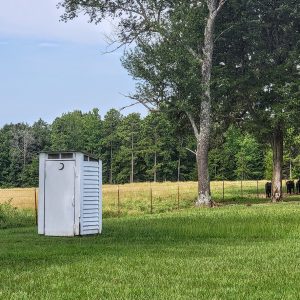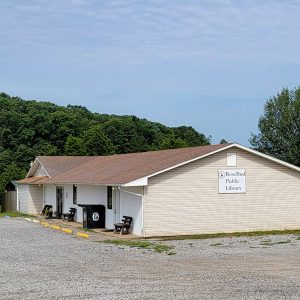calsfoundation@cals.org
Rose Bud (White County)
| Latitude and Longitude: | 35°19’53″N 092°04’53″W |
| Elevation: | 630 feet |
| Area: | 6.04 square miles (2020 Census) |
| Population: | 494 (2020 Census) |
| Incorporation Date: | June 27, 1969 |
Historical Population as per the U.S. Census:
|
1810 |
1820 |
1830 |
1840 |
1850 |
1860 |
1870 |
1880 |
1890 |
1900 |
|
– |
– |
– |
– |
– |
– |
– |
– |
– |
– |
|
1910 |
1920 |
1930 |
1940 |
1950 |
1960 |
1970 |
1980 |
1990 |
2000 |
|
– |
– |
– |
– |
– |
– |
157 |
202 |
156 |
429 |
|
2010 |
2020 |
|
|
|
|
|
|
|
|
|
482 |
272 |
|
|
|
|
|
|
|
|
Rose Bud is a town in western White County, located at the intersection of State Highways 5 and 36. Settled before the Civil War, it has long been a center for agriculture and education, but the town did not incorporate until 1969.
Several families from western Kentucky moved to Arkansas around 1851. They chose to settle in the lowlands of western White County because of the natural springs that watered the area. Cotton was their chief cash crop, although they dedicated much of their land to subsistence farming. A post office was established for the area in 1858. The name of the post office, Rose Bud, was reportedly supplied by Louise Hill, younger sister of the first postmaster, William “Jimmy” Hill. When Arkansas entered the Civil War, Hill and many of his neighbors joined the Confederate army. By the end of the war, the post office had been discontinued, but it was reopened by William Upton in 1866.
Several stores were established in Rose Bud after the war, including a general merchandise store belonging to J. C. R. Davis and a similar establishment owned by Elbert A. Robbins. A Baptist church was built around 1875. Cotton gins and a sawmill were also built in Rose Bud before the end of the nineteenth century.
None of the railroads built in Arkansas in the late nineteenth and early twentieth centuries went through the Rose Bud area, but Charles M. May began a trucking business early in the twentieth century to transport cotton, berries, and potatoes from the Rose Bud area farms to Searcy (White County). May also operated a bus line and a store. A hotel was opened in Rose Bud around 1912. School consolidation in 1917 brought many more area students into Rose Bud, and the community’s high school became a subject of national attention. It was one of the first school districts to hire an agricultural teacher, and the attention given to the school motivated homeowners and shopkeepers to improve their property. The school building burned down in 1921 but was replaced with a larger structure in less than a year.
Another fire, thought to be the result of arson, devastated downtown Rose Bud in 1925, causing more than $100,000 in damage. Some businesses were rebuilt, but others relocated to larger towns in the area. New stores were opened by Tom Casteel and Riley Emory during the 1930s. Roads were improved, providing better transportation to Searcy and to Heber Springs (Cleburne County). The school district continued to grow, fed by further consolidation of the neighboring school districts.
Rose Bud was incorporated as a town in June 1969. This act permitted the town to build a water works and to hire a police officer. Two tornadoes struck the town in December 1982, destroying nearly all the buildings, although there were no fatalities. The town was rebuilt.
Among the businesses in Rose Bud are Honeysuckle Lane Cheese, which is a raw milk cheese manufacturer, and RoZark Hills Roasterie Inc., an establishment that roasts and grinds coffee beans. There are five churches, four restaurants, and a wide variety of services, including stores, automotive services, health services, and banks. The largest employer is Caldwell Milling, which was established in 1930 as a farm that grew cotton, corn, and potatoes before diversifying in the following years into dairy, as well as seeds and fertilizer. Enrollment in the Rose Bud School District totals a little more than 800 students as of 2013.
Rose Bud has one structure on the National Register of Historic Places, a chicken house built in 1938. The town’s most noted citizen was Nick Bacon, who received the Medal of Honor in 1969 for his heroic actions in the Vietnam War. Leona Troxell was a political activist who played a major role in the development of the Republican Party in Arkansas.
For additional information:
Fomby, Nancy May. “The Rose Bud Fire of 1925.” White County Heritage 8 (October 1970): 93–95.
May, Milton D. “Rose Bud Cotton Gins.” White County Heritage 43 (2005): 47–53. Online at https://scholarworks.harding.edu/wchs-heritagejournal/26/ (accessed January 10, 2024).
———. “The Rose Bud Town Spring.” White County Heritage 45 (2007): 89–91. Online at https://scholarworks.harding.edu/wchs-heritagejournal/28/ (accessed January 10, 2024).
Moss, Brandon. “A History of the Rose Bud First Baptist Church, Founded 1878.” White County Heritage 58 (2020): 21–32.
Rose Bud, Arkansas. http://townofrosebud.org/ (accessed August 6, 2022).
Somers, Jessie Rhyne. “How Rose Bud Was Named.” White County Heritage 17 (1979): 4–6.
Steven Teske
Butler Center for Arkansas Studies
 Bethesda Cemetery
Bethesda Cemetery  Bethesda Outhouse
Bethesda Outhouse  Entering Rose Bud
Entering Rose Bud  Martin Cemetery
Martin Cemetery  Rose Bud Cemetery
Rose Bud Cemetery  Rose Bud High School
Rose Bud High School  Rose Bud Library
Rose Bud Library  Rose Bud Post Office
Rose Bud Post Office  Rose Bud Schools
Rose Bud Schools  White County Map
White County Map 



Comments
No comments on this entry yet.